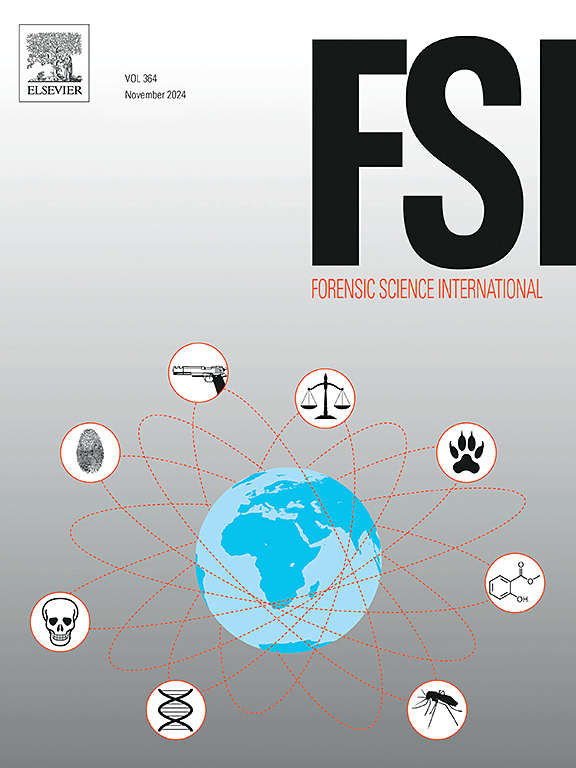影响意大利临床和法医实验室血液酒精测定准确性的因素:一项为期7年的能力测试研究的结果
IF 2.2
3区 医学
Q1 MEDICINE, LEGAL
引用次数: 0
摘要
报告了一项涉及意大利实验室测量血液酒精浓度(BAC)的7年熟练程度研究的结果。两份含有已知乙醇含量的血液样本每年两次被送往意大利约50个实验室进行分析。血液样品按照ISO标准制备,其中包括优化运输和储存条件,以确保乙醇的稳定性。参与者完成了一份在线问卷,详细说明了他们的分析结果以及其他分析细节,包括GC-FID或GC-MS的使用、储存温度、样品交付和分析之间的时间、参考物质、重复测定和血液等分物的体积。参与者还确认了他们是否被认可以及测定BAC的测量不确定度是多少。对1171份血样(剔除异常值后)的分析结果采用稳健统计方法计算z分数进行评估。实验室间标准偏差(SD)随血液酒精浓度增加而增加(r = 0.94,p <; 0.001)。值得注意的是,在2017年至2023年期间观察到稳健SD显着降低(p = 0.01)。使用矩阵匹配的认证标准物质得到更准确的结果,平均z分数接近于零。分析方法的选择、储存条件、时间延迟和实验室认可对z分数没有显著影响。这项研究表明,定期参加实验室间的熟练程度计划确实有助于提高分析性能。标准物质的选择是结果准确性的主要决定因素。本文章由计算机程序翻译,如有差异,请以英文原文为准。
Factors affecting the accuracy of blood alcohol determinations in clinical and forensic laboratories in Italy: Results of a 7-year proficiency testing study
The results of a 7-year proficiency study involving Italian laboratories measuring blood alcohol concentration (BAC) are reported. Two blood samples spiked with known amounts of ethanol were sent for analysis twice per year to approximately 50 laboratories across Italy. The blood samples were prepared according to ISO standards, which included optimized transport and storage conditions to ensure ethanol stability. Participants completed an online questionnaire detailing their analytical results along with other analytical details, including the use of GC-FID or GC-MS, storage temperature, time between sample delivery and analysis, reference materials, replicate determinations, and volume of blood aliquot. The participants also confirmed whether or not they were accredited and what the measurement uncertainty was for determination of BAC. The results from analysis of 1171 blood samples (after elimination of outliers) were evaluated by calculating z-scores using robust statistical methods. The inter-laboratory standard deviation (SD) increased with blood alcohol concentration (r = 0.94, p < 0.001). Notably, a significant reduction in robust SD was observed between 2017 and 2023 (p = 0.01). The use of matrix-matched certified reference materials gave more accurate results with mean z-scores closer to zero. The choice of analytical method, storage conditions, time delays, and laboratory accreditation did not significantly influence z-scores. This study revealed that regular participation in inter-laboratory proficiency programs did contribute to improving analytical performance. The choice of certified reference material was the principal determinant of the accuracy of the results.
求助全文
通过发布文献求助,成功后即可免费获取论文全文。
去求助
来源期刊

Forensic science international
医学-医学:法
CiteScore
5.00
自引率
9.10%
发文量
285
审稿时长
49 days
期刊介绍:
Forensic Science International is the flagship journal in the prestigious Forensic Science International family, publishing the most innovative, cutting-edge, and influential contributions across the forensic sciences. Fields include: forensic pathology and histochemistry, chemistry, biochemistry and toxicology, biology, serology, odontology, psychiatry, anthropology, digital forensics, the physical sciences, firearms, and document examination, as well as investigations of value to public health in its broadest sense, and the important marginal area where science and medicine interact with the law.
The journal publishes:
Case Reports
Commentaries
Letters to the Editor
Original Research Papers (Regular Papers)
Rapid Communications
Review Articles
Technical Notes.
 求助内容:
求助内容: 应助结果提醒方式:
应助结果提醒方式:


